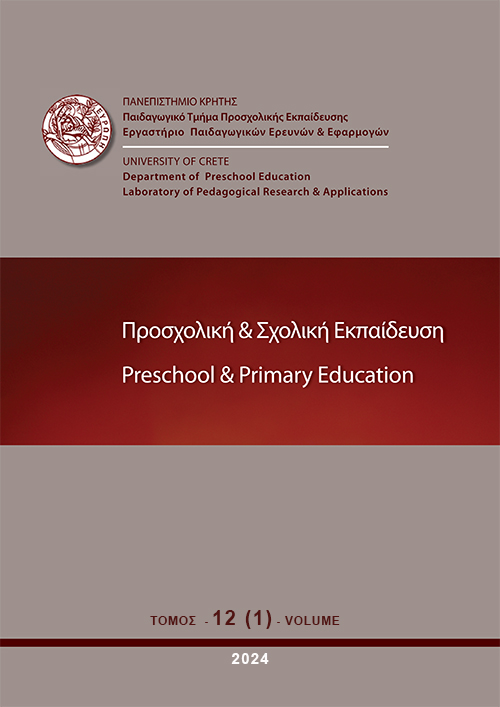The Role of Home Literacy Environment in Reading Beyond the Early Grades
Résumé
Most studies on home literacy environment (HLE) have examined its role in children’s language and literacy skills in the early childhood years. However, parents continue to be involved in their children’s learning later on. Thus, in this study we aimed to examine if different HLE aspects (code-related HLE, meaning-related HLE, access to literacy resources, age of onset of parent-child literacy activities and child’s own independent reading) predict children’s reading and spelling performance in upper grades. Study 1 was conducted in China and included 111 Grade 3 children (57 girls, 54 boys; Mage = 9.22 years, SD = 0.30) and their parents. Study 2 was conducted in Cyprus and included 208 Grade 4 Greek-speaking children (114 girls, 94 boys; Mage = 9.77 years, SD = 0.39) and their parents. Results of hierarchical regression analyses in both studies showed that after controlling for the effects of parents’ education and nonverbal IQ, neither code- nor meaning-related HLE activities predicted reading. In addition, they showed that access to literacy resources was a significant predictor of both reading outcomes in Study 1 and child’s independent reading was a significant predictor of reading and spelling in Study 2 (with one exception when predicting passage comprehension). Taken together, these findings suggest that HLE might be important in children’s reading and spelling performance, but different aspect of HLE play a role at different times. When children are in upper grades, parents may still contribute to their children’s literacy skills by providing access to literacy resources and by creating an environment that allows their child to practice independent reading.
Article Details
- Comment citer
-
Georgiou, G. K., & Zhang, L. (2024). The Role of Home Literacy Environment in Reading Beyond the Early Grades. Preschool and Primary Education, 12(1), 1–20. https://doi.org/10.12681/ppej.35467
- Rubrique
- Άρθρα

Ce travail est disponible sous licence Creative Commons Attribution - Pas d’Utilisation Commerciale - Partage dans les Mêmes Conditions 4.0 International.
Οι συγγραφείς των άρθρων που δημοσιεύονται στο ΠΡΟΣΧΟΛΙΚΗ & ΣΧΟΛΙΚΗ ΕΚΠΑΙΔΕΥΣΗ διατηρούν τα δικαιώματα πνευματικής ιδιοκτησίας επί των άρθρων τους, δίνοντας στο περιοδικό το δικαίωμα της πρώτης δημοσίευσης. Άρθρα που δημοσιεύονται στο ΠΡΟΣΧΟΛΙΚΗ & ΣΧΟΛΙΚΗ ΕΚΠΑΙΔΕΥΣΗ διατίθενται με άδεια Creative Commons 3.0 και σύμφωνα με την άδεια μπορούν να χρησιμοποιούνται ελεύθερα, με αναφορά στο/στη συγγραφέα και στην πρώτη δημοσίευση για μη κερδοσκοπικούς σκοπούς και με δικαίωμα τροποποίησης μόνον με παρόμοια διανομή (αν αναμείξετε, τροποποιήσετε, ή δημιουργήσετε πάνω στο υλικό, πρέπει να διανείμετε τις δικές σας συνεισφορές υπό την ίδια άδεια όπως και το πρωτότυπο). To Εργαστήριο Παιδαγωγικών Ερευνών και Εφαρμογών του Παιδαγωγικού Τμήματος Προσχολικής Εκπαίδευσης του Πανεπιστημίου Κρήτης και το Εθνικό Κέντρο Τεκμηρίωσης διατηρούν το δικαίωμα να δημοσιεύουν, να αναπαραγάγουν, να παρουσιάζουν στο κοινό, να διανέμουν και χρησιμοποιούν άρθρα που δημοσιεύονται στο ΠΡΟΣΧΟΛΙΚΗ & ΣΧΟΛΙΚΗ ΕΚΠΑΙΔΕΥΣΗ σε οποιοδήποτε μέσο και μορφή είτε μεμονωμένα είτε ως μέρη συλλογικών έργων, για όλο το χρόνο διάρκειας προστασίας της πνευματικής ιδιοκτησίας και για όλες τις χώρες του κόσμου. Αυτό περιλαμβάνει ενδεικτικά και όχι αποκλειστικά, το δικαίωμα δημοσίευσης των άρθρων σε τεύχη του περιοδικού ΠΡΟΣΧΟΛΙΚΗ & ΣΧΟΛΙΚΗ ΕΚΠΑΙΔΕΥΣΗ, αναπαραγωγής και διανομής μεμονωμένων αντιγράφων των άρθρων, αναπαραγωγής ολόκληρων των άρθρων σε άλλη έκδοση του Εργαστηρίου Παιδαγωγικών Ερευνών και Εφαρμογών του Παιδαγωγικού Τμήματος Προσχολικής Εκπαίδευσης του Πανεπιστημίου Κρήτης και του Εθνικού Κέντρου Τεκμηρίωσης και αναπαραγωγής και διανομής των άρθρων ή περίληψης αυτών με χρήση πληροφορικού συστήματος αποθετηρίου.



